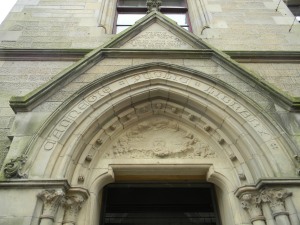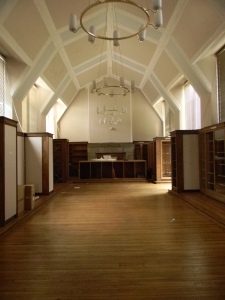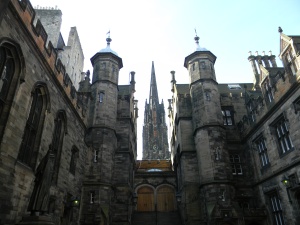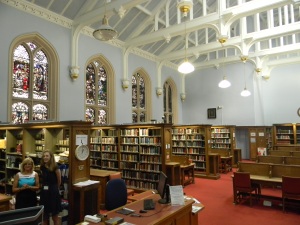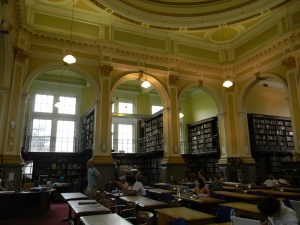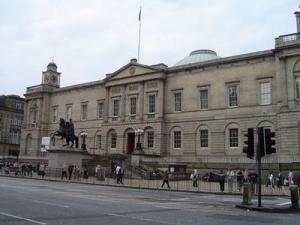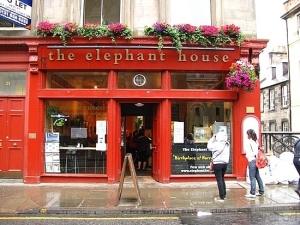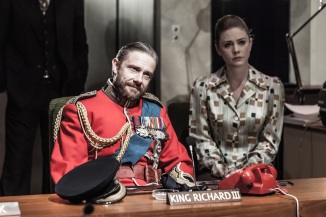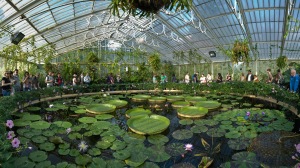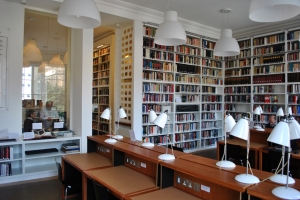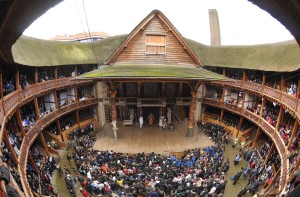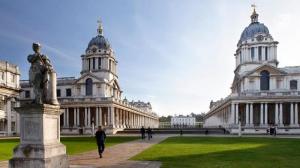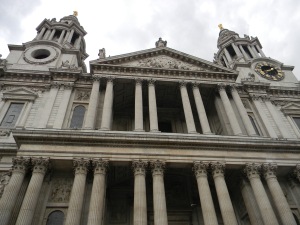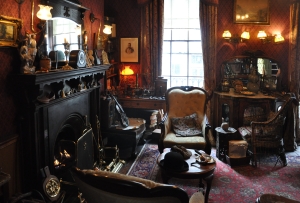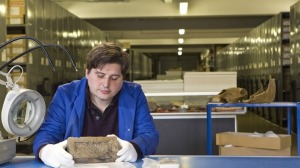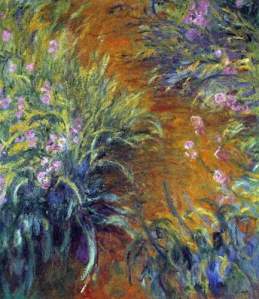As our last full day in Edinburgh, our class had a free and empty schedule. Several of us decided to join Dr. Welsh and Dr. Griffis on their visit to Dunfermline, Scotland. This is the birthplace of Andrew Carnegie, the Scottish American who led the America’s steel industry during the 19th century. As influential as he was in America, and the world, we were interested in something more specific: his libraries. During the last half of his life, Carnegie funded the building of thousands of libraries throughout the world, and today, we had the privilege of visiting his very first. Also, as I previously stated, this is the city Carnegie was born in, so after our library visit we got to see the house his family lived in, which is now a museum.
We had a brief bus ride from Edinburgh to Dunfermline, grabbed some coffee and breakfast, then explored Dunfermline Abbey. The Abbey, which opened in 1250, is the burial place of Robert I, or as he is commonly known, Robert the Bruce. A popular Scottish hero, Robert fought against the English during his life and helped Scotland regain its independence, eventually taking the Scottish throne. After the Abbey and a quick lunch, we headed towards the library. We were told prior to our trip that the library was actually closed and currently being emptied. In fact, it will be closed for at least two years for renovations; the newly modeled building will serve as a community hub, and play host to many activities and audiences. In a way, it will be more like a community center, where members of the community can enjoy library services, and in the case of Dunfermline, a museum and culturally educational experience too.
This was my first visit to an empty library, and I found it eerie and heartbreaking. What can I say, I’m a bibliophile at heart! But luckily in this case, the books had not been destroyed or permanently removed, only temporarily stored. The exciting part of a visit to an empty library is how much attention you can give the actual physical space. We took our time as a group looking through every room, hallway, door, nook, cranny, and everything in between, and it was all so wonderful! Our guides Janice, Sharron, and Anne knew anything and everything we could possibly want to know about the building, its history, and its future! The library first opened in 1883, so seeing the antique and historical features of the building intermixed with the modern and renovated was very neat. I really enjoyed spending time speaking with the current caretaker of the building; it was quite obvious that he truly cared for the building, and despite the upcoming inevitable changes and progress, I believe he will miss the old. In this aspect, I think I agree with him. But how are libraries to survive if they do not progress? I believe Carnegie would insist upon progress!
Our group was featured in the local news!:
After a break for afternoon tea with our lovely guides, we bid them farewell and visited Andrew Carnegie’s birthplace. I stayed with some friends in Dunfermline to do some shopping before we caught the bus back to Edinburgh for our last night. Tonight is the last night our group will be together in the same place until next week. As we all prepare for our mini-breaks, I’m realizing just how hard it will be to say our (somewhat) final goodbyes at the end of the month!
